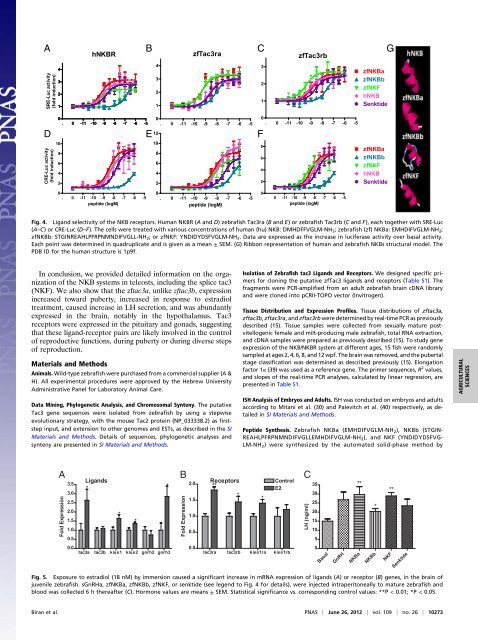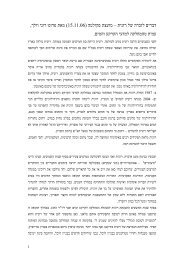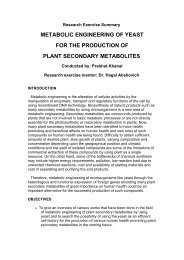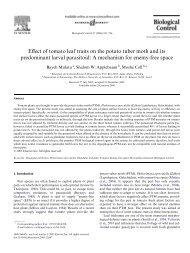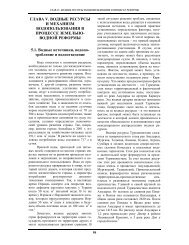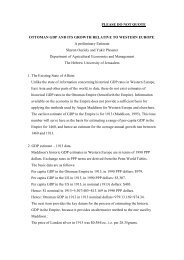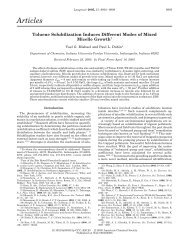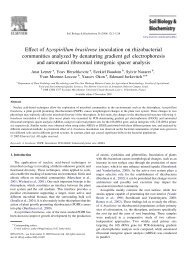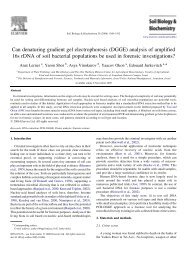Neurokinin Bs and neurokinin B receptors in zebrafish- potential role ...
Neurokinin Bs and neurokinin B receptors in zebrafish- potential role ...
Neurokinin Bs and neurokinin B receptors in zebrafish- potential role ...
You also want an ePaper? Increase the reach of your titles
YUMPU automatically turns print PDFs into web optimized ePapers that Google loves.
A B C<br />
SRE-Luc activity<br />
(fold <strong>in</strong>duction)<br />
CRE-Luc activity<br />
(fold <strong>in</strong>duction)<br />
4<br />
3<br />
2<br />
1<br />
0<br />
. 0<br />
hNKBR zfTac3ra zfTac3rb<br />
-11 -10 -9 -8 -7 -6 -5<br />
peptide (logM)<br />
In conclusion, we provided detailed <strong>in</strong>formation on the organization<br />
of the NKB systems <strong>in</strong> teleosts, <strong>in</strong>clud<strong>in</strong>g the splice tac3<br />
(NKF). We also show that the zftac3a, unlike zftac3b, expression<br />
<strong>in</strong>creased toward puberty, <strong>in</strong>creased <strong>in</strong> response to estradiol<br />
treatment, caused <strong>in</strong>crease <strong>in</strong> LH secretion, <strong>and</strong> was abundantly<br />
expressed <strong>in</strong> the bra<strong>in</strong>, notably <strong>in</strong> the hypothalamus. Tac3<br />
<strong>receptors</strong> were expressed <strong>in</strong> the pituitary <strong>and</strong> gonads, suggest<strong>in</strong>g<br />
that these lig<strong>and</strong>-receptor pairs are likely <strong>in</strong>volved <strong>in</strong> the control<br />
of reproductive functions, dur<strong>in</strong>g puberty or dur<strong>in</strong>g diverse steps<br />
of reproduction.<br />
Materials <strong>and</strong> Methods<br />
Animals. Wild-type <strong>zebrafish</strong> were purchased from a commercial supplier (A &<br />
H). All experimental procedures were approved by the Hebrew University<br />
Adm<strong>in</strong>istrative Panel for Laboratory Animal Care.<br />
Data M<strong>in</strong><strong>in</strong>g, Phylogenetic Analysis, <strong>and</strong> Chromosomal Synteny. The putative<br />
Tac3 gene sequences were isolated from <strong>zebrafish</strong> by us<strong>in</strong>g a stepwise<br />
evolutionary strategy, with the mouse Tac2 prote<strong>in</strong> (NP_033338.2) as firststep<br />
<strong>in</strong>put, <strong>and</strong> extension to other genomes <strong>and</strong> ESTs, as described <strong>in</strong> the SI<br />
Materials <strong>and</strong> Methods. Details of sequences, phylogenetic analyses <strong>and</strong><br />
synteny are presented <strong>in</strong> SI Materials <strong>and</strong> Methods.<br />
4<br />
3<br />
2<br />
1<br />
0<br />
. 0 -11 -10 -9 -8 -7 -6 -5<br />
0<br />
. 0 -11 -10 -9 -8 -7 -6 -5<br />
0<br />
. 0<br />
D 12 E F<br />
10<br />
10<br />
8<br />
8<br />
8<br />
6<br />
6<br />
6<br />
4<br />
4<br />
4<br />
2<br />
2<br />
2<br />
0<br />
. 0<br />
-11 -10 -9 -8 -7 -6 -5<br />
peptide (logM)<br />
3<br />
2<br />
1<br />
0<br />
. 0<br />
-11 -10 -9 -8 -7 -6 -5<br />
-11 -10 -9 -8 -7 -6 -5<br />
peptide (logM)<br />
zfNKBa<br />
zfNKBb<br />
zfNKF<br />
hNKB<br />
Senktide<br />
zfNKBa<br />
zfNKBb<br />
zfNKF<br />
hNKB<br />
Senktide<br />
Fig. 4. Lig<strong>and</strong> selectivity of the NKB <strong>receptors</strong>. Human NKBR (A <strong>and</strong> D) <strong>zebrafish</strong> Tac3ra (B <strong>and</strong> E) or <strong>zebrafish</strong> Tac3rb (C <strong>and</strong> F), each together with SRE-Luc<br />
(A–C) or CRE-Luc (D–F). The cells were treated with various concentrations of human (hu) NKB: DMHDFFVGLM-NH 2; <strong>zebrafish</strong> (zf) NKBa: EMHDIFVGLM-NH 2;<br />
zfNKBb: STGINREAHLPFRPNMNDIFVGLL-NH 2; or zfNKF: YNDIDYDSFVGLM-NH 2. Data are expressed as the <strong>in</strong>crease <strong>in</strong> luciferase activity over basal activity.<br />
Each po<strong>in</strong>t was determ<strong>in</strong>ed <strong>in</strong> quadruplicate <strong>and</strong> is given as a mean ± SEM. (G) Ribbon representation of human <strong>and</strong> <strong>zebrafish</strong> NK<strong>Bs</strong> structural model. The<br />
PDB ID for the human structure is 1p9f.<br />
A B C<br />
Isolation of Zebrafish tac3 Lig<strong>and</strong>s <strong>and</strong> Receptors. We designed specific primers<br />
for clon<strong>in</strong>g the putative zfTac3 lig<strong>and</strong>s <strong>and</strong> <strong>receptors</strong> (Table S1). The<br />
fragments were PCR-amplified from an adult <strong>zebrafish</strong> bra<strong>in</strong> cDNA library<br />
<strong>and</strong> were cloned <strong>in</strong>to pCRII-TOPO vector (Invitrogen).<br />
Tissue Distribution <strong>and</strong> Expression Profiles. Tissue distributions of zftac3a,<br />
zftac3b, zftac3ra, <strong>and</strong> zftac3rb were determ<strong>in</strong>ed by real-time PCR as previously<br />
described (15). Tissue samples were collected from sexually mature postvitellogenic<br />
female <strong>and</strong> milt-produc<strong>in</strong>g male <strong>zebrafish</strong>, total RNA extraction,<br />
<strong>and</strong> cDNA samples were prepared as previously described (15). To study gene<br />
expression of the NKB/NKBR system at different ages, 15 fish were r<strong>and</strong>omly<br />
sampled at ages 2, 4, 6, 8, <strong>and</strong> 12 wpf. The bra<strong>in</strong> was removed, <strong>and</strong> the pubertal<br />
stage classification was determ<strong>in</strong>ed as described previously (15). Elongation<br />
factor 1α (39) was used as a reference gene. The primer sequences, R 2 values,<br />
<strong>and</strong> slopes of the real-time PCR analyses, calculated by l<strong>in</strong>ear regression, are<br />
presented <strong>in</strong> Table S1.<br />
ISH Analysis of Embryos <strong>and</strong> Adults. ISH was conducted on embryos <strong>and</strong> adults<br />
accord<strong>in</strong>g to Mitani et al. (30) <strong>and</strong> Palevitch et al. (40) respectively, as detailed<br />
<strong>in</strong> SI Materials <strong>and</strong> Methods.<br />
Peptide Synthesis. Zebrafish NKBa (EMHDIFVGLM-NH2), NKBb (STGIN-<br />
REAHLPFRPNMNDIFVGLLEMHDIFVGLM-NH2), <strong>and</strong> NKF (YNDIDYDSFVG-<br />
LM-NH 2) were synthesized by the automated solid-phase method by<br />
Fig. 5. Exposure to estradiol (18 nM) by immersion caused a significant <strong>in</strong>crease <strong>in</strong> mRNA expression of lig<strong>and</strong>s (A) or receptor (B) genes, <strong>in</strong> the bra<strong>in</strong> of<br />
juvenile <strong>zebrafish</strong>. sGnRHa, zfNKBa, zfNKBb, zfNKF, or senktide (see legend to Fig. 4 for details), were <strong>in</strong>jected <strong>in</strong>traperitoneally to mature <strong>zebrafish</strong> <strong>and</strong><br />
blood was collected 6 h thereafter (C). Hormone values are means ± SEM. Statistical significance vs. correspond<strong>in</strong>g control values: **P < 0.01; *P < 0.05.<br />
Biran et al. PNAS | June 26, 2012 | vol. 109 | no. 26 | 10273<br />
G<br />
AGRICULTURAL<br />
SCIENCES


